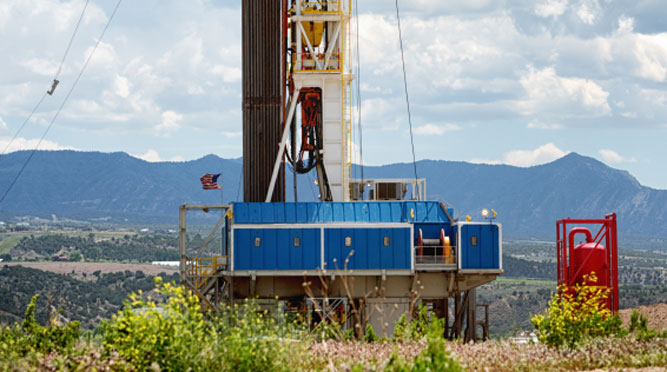- Alternatives to Conventional Oil Wells
- Advanced Nuclear Fission
- Hydrogen Fuel Cells
- Electric Vehicles
- Advanced Coal Technologies
- Biofuels
- Advanced Nuclear Fission
- Hydrogen Fuel Cells
- Alternatives to Conventional Oil Wells
- Electric Vehicles
- Advanced Coal Technologies
- Biofuels
iStock.com/dan_prat
Alternatives to Conventional Oil Wells
America has multiple unconventional petroleum sources—geological formations from which oil can be extracted. Resources are abundant and some of them may have a major impact on U.S. oil supply for decades. The largest are oil shale (organic-rich rock that releases petroleum-like liquids when heated); tar sands (heavy, thick, black oil mixed with sand, clay, and water); and heavy crude oil (thicker and slower flowing than conventional oil).
According to the U.S. Bureau of Land Management (BLM), “the United States holds more than half the world’s oil shale. The largest known deposits of oil shale are in a 16,000-square mile area of the Green River Formation in Colorado, Utah, and Wyoming.” The BLM’s estimate of the total in-place oil shale resources there is 4.3 trillion barrels.
(Note that these are resources—that is, a reasonable estimate of what is in the ground. Proved reserves, by contrast, are known deposits deemed to be cost-effectively recoverable with current technology and at current prices.)
The EIA projects that total domestic crude oil production will increase 20% by 2040 and that tight oil production will increase 45% between 2015 and 2040.
Tight oil, which can be extracted using processes such as hydraulic fracturing and horizontal drilling (see LEARN MORE: Hydraulic Fracturing) is having an enormous effect on the U.S. supply. According to the U.S. Energy Information Administration (EIA), tight oil made up 52% of all U.S. crude oil production in 2014. The EIA projects that total domestic crude oil production will increase 20% by 2040 and that tight oil production will increase 45% between 2015 and 2020.
However, extracting these resources can be much more costly, energy intensive, and environmentally damaging than drilling for conventional oil. For example, the processes by which we mine and refine tar sands (which also may be used for oil shale) to produce usable oil involve significant disturbance of the land, extensive use of water (a particular concern in dry regions where oil shale is often found), and potential emissions of pollutants to the air and groundwater. In addition, more energy goes into these processes than into extracting and refining conventional oil and more carbon dioxide is emitted.
But with total U.S. oil production continuing to grow, increased attention will be focused on exploiting these alternative sources and on overcoming the challenges associated with their use.
Related topics
Source Material
- Development of Unconventional Hydrocarbon Resources in the Appalachian Basin: Workshop Summary (2014)
- Induced Seismicity Potential in Energy Technologies (2013)
- Effects of Diluted Bitumen on Crude Oil Transmission Pipelines: TRB Special Report 311 (2013)
- Liquid Transportation Fuels from Coal and Biomass: Technological Status, Costs, and Environmental Impacts (2009)
- Best Available and Safest Technologies for Offshore Oil and Gas Operations: Options for Implementation (2013)

